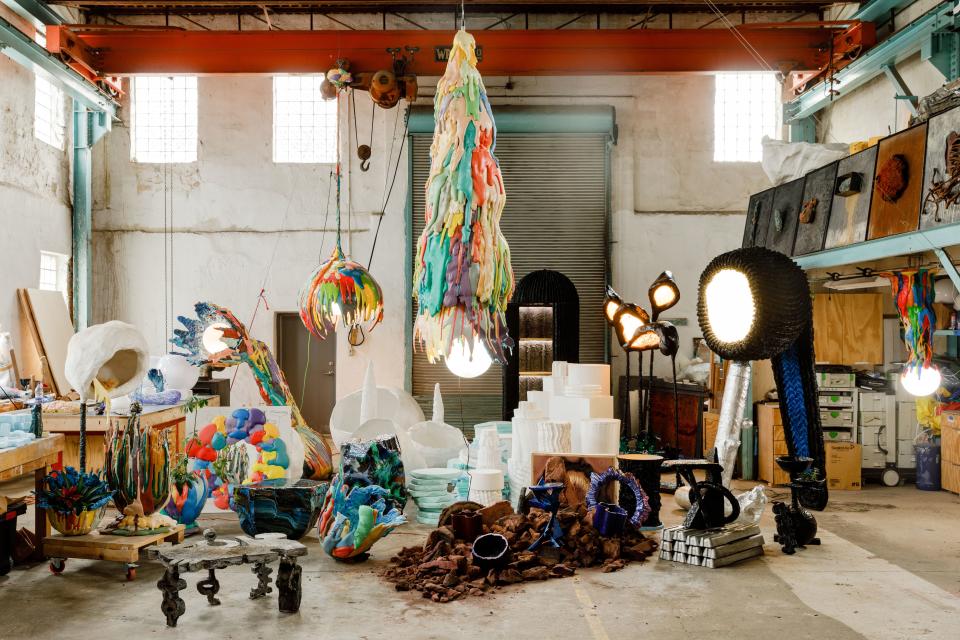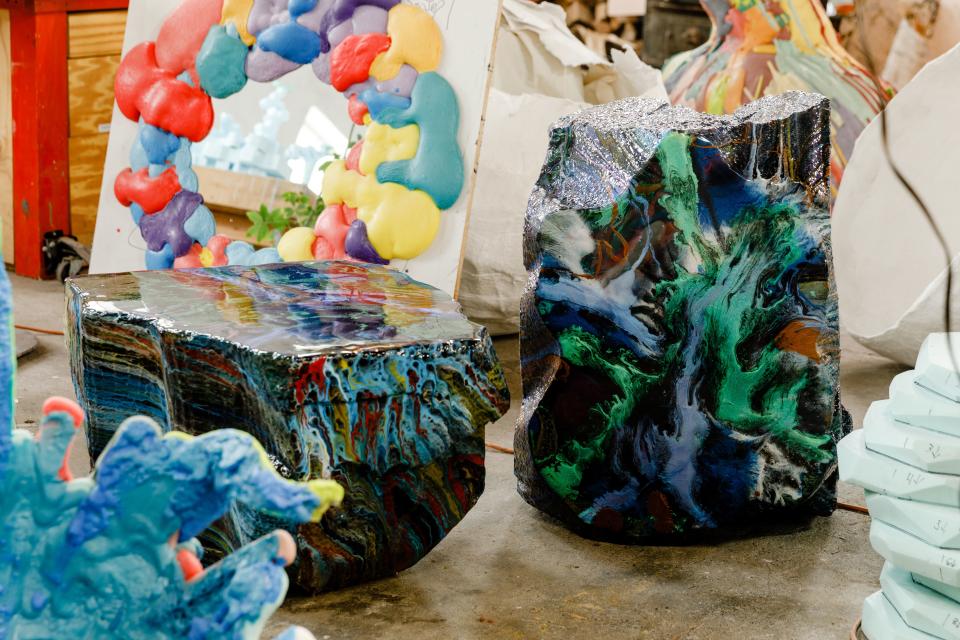Inside Artist-Designer Brecht Wright Gander’s Soaring New Studio
“I was never a city person,” admits designer Brecht Wright Gander, who grew up in Providence, Rhode Island, and, after studying philosophy at Skidmore College in upstate New York, settled in Brooklyn to work with his hands. Like so many city people who aren’t city people, he remained tethered to the place by his work—a string of fabrication jobs (metal and woodworking, mostly) for architecture firms in Brooklyn and Manhattan.
But when the more experimental, limited edition creations he was devising under the moniker Birnam Wood Studio earned him a coveted spot on the roster of design gallery Todd Merrill Studio last year, things changed. It was suddenly possible to have an income without living in New York. And when his landlord in Brooklyn told him about a property in Alpha, New Jersey—an erstwhile paper mill set at the edge of the bubbling Musconetcong River—Gander was more than ready to decamp to the hills.
Just a few months in, the soaring, warehouse-like space he shares with three other artists (they all live in an apartment upstairs) is filled with new work. Despite the quietude of the country, he’s under the gun preparing new pieces for—at the time of our visit—Salon Art + Design in New York and Design Miami, opening this week.

“I’m working on a bunch of new cast stuff,” Gander explains, gesturing to the array of cartoonish, carved-foam shapes, scattered about the studio. Soon, he’ll select the components he likes best and sand cast them in aluminum to create tables and stools. An offshoot of his series of vases called Ode to the Wrong Angle, the new pieces, Gander explains, pay homage to artist Elizabeth Murray’s paintings, poet Pablo Neruda’s Odes to Common Things, and architect Le Corbusier’s paintings and texts called Poem of the Right Angle—all works that embrace inherent contradiction.
“[Murray] has a sense of humor and playfulness, but she’s not playing around,” Gander says of the artist’s gigantic, often three-dimensional paintings. “You don’t labor over an enormous thing the way she does just to tell a joke.”
He hopes to achieve a similar balance in his own work, particularly with the latest experiments, more extensive—and monumental—than ever thanks to his larger space and distance from the city. His new geode-like Hunk tables are carved from foam with a chain saw and then slathered with coat after coat of iridescent color-shifting resin, the same used on flashy hot rods. Then there are the eye-smacking urethane-foam Swamp lights that lazily drip from the ceiling and emerge from the floor like Seussian vegetation, fruits of his latest material investigation that at times was as frustrating as it was frenetic.

“This foam is really a pain,” Gander admits of the unforgiving stuff, which is only pliable for a few seconds, super sensitive to humidity and temperature, and turns pouring into an intense physical feat. “It’s a lot of choreographed and quick, intuitive decision-making to get this gloriously anarchic form.”
One of Gander’s gripes with New York is that all the buildings look like they’ve come from outer space. “The fabrication processes are so advanced and controlled, there’s no sense of human touch,” he explains. “You have no idea how anything is made.” By gravitating to materials he can put his hands on and manipulate, Gander has surrounded himself in Alpha with pieces that do precisely the opposite. “You see the fingerprints across the entire piece. The texture becomes the story of how it was made.”
A few of Gander’s older, New York–made works—the hulking black True Jelly of the Beast bar cabinet slathered in paper pulp and pieces from his Junk Band series, where found objects become inky, vaguely functional amalgams—mix in with the new, and it’s hard to ignore their almost-sinister darkness, among the cast of colorful new creations.
“I’m going to return to that,” he says, but is quick to admit: “There’s something celebratory in this new work. A certain letting loose.” He chalks it up to the new environment: “Being here allows me to play around and treat that as the real work. Now it’s become the real work.”
Inside Artist-Designer Brecht Wright Gander's Soaring New Studio









Originally Appeared on Architectural Digest

